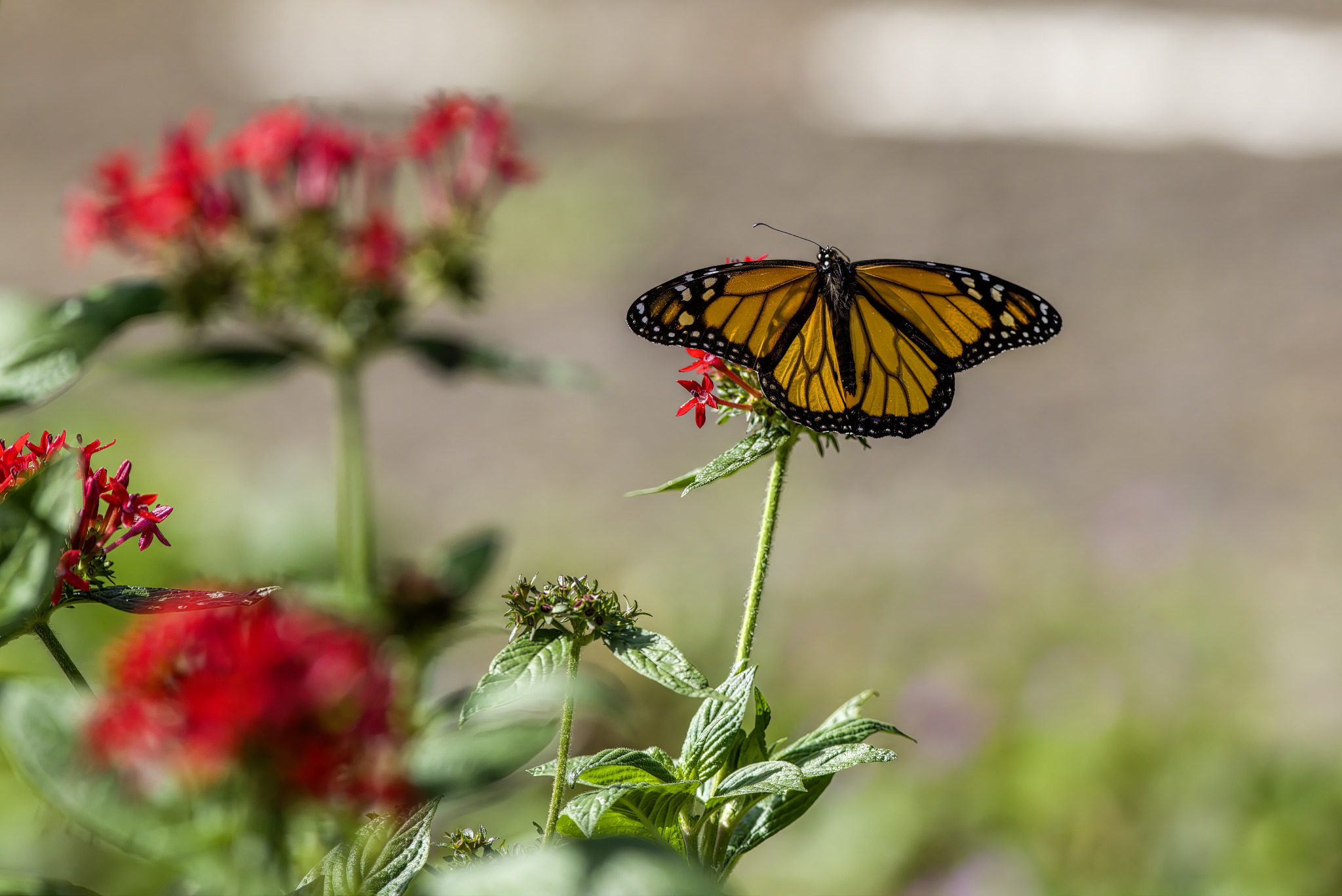The American Monarch (Danaus plexippus) is one of the most iconic butterfly species found in North America. Here’s some information about this fascinating insect:
- Appearance: American Monarchs are large butterflies with a wingspan ranging from 8.9 to 10.2 centimeters (3.5 to 4 inches). They have a striking orange and black pattern on their wings, with white spots along the margins. The undersides of their wings are a muted orange-brown color with veins and markings. One of the most distinctive features of the Monarch is its black veins that converge to form a thickened, black border on the wings.
- Habitat: American Monarchs inhabit a wide range of habitats, including open fields, meadows, prairies, and gardens. They are also commonly found in urban and suburban areas. Monarchs are well-known for their long-distance migrations, which take them from their breeding grounds in North America to overwintering sites in central Mexico or along the coast of California.
- Lifecycle: American Monarchs undergo complete metamorphosis, consisting of four stages: egg, larva (caterpillar), pupa (chrysalis), and adult butterfly. The female butterfly lays eggs on milkweed plants (Asclepias spp.), which serve as the sole larval host plants for Monarch caterpillars. The caterpillars feed exclusively on milkweed leaves, acquiring toxic compounds that make them unpalatable to predators. After several molts, the caterpillar forms a chrysalis, where it undergoes metamorphosis before emerging as an adult butterfly.
- Migration: The Monarch migration is one of the most remarkable natural phenomena, with millions of butterflies traveling thousands of miles each year. Eastern Monarchs from the United States and Canada migrate to central Mexico, while western Monarchs migrate to coastal California. The migration is triggered by changes in day length and temperature, and the butterflies navigate using a combination of visual cues and the Earth’s magnetic field.
- Conservation: Despite their iconic status, American Monarchs face numerous threats, including habitat loss, climate change, pesticide use, and the decline of milkweed plants. Loss of overwintering habitat in Mexico and California, in particular, poses a significant risk to Monarch populations. Conservation efforts focused on habitat restoration, milkweed conservation, and public awareness are essential for ensuring the survival of this iconic butterfly species.
Overall, the American Monarch is a symbol of beauty, resilience, and wonder, captivating people with its extraordinary lifecycle and epic migrations. Efforts to conserve Monarch habitat not only benefit this iconic butterfly but also contribute to the preservation of diverse ecosystems and the protection of other pollinator species.
Visited 868 times, 2 visit(s) today
Views: 1293
Subscribe to the newsletter:
